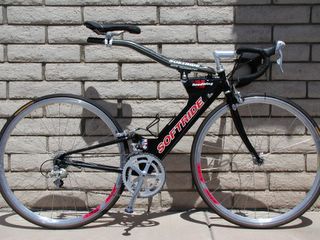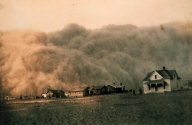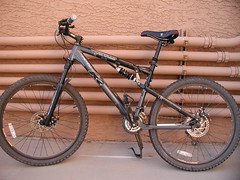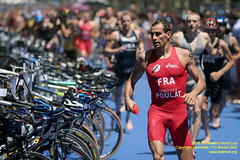Staying at a five star resort has definite perks and serious wallet sucking abilities. Who thought a fricken cup of black coffee, one size only sir, would cost $5.00?
Really the resort was a blast. There was five families total that went to stay at the Fairmont Scottsdale Princess over the weekend and we snuck a sixth family into the pool on Saturday. I lived in Snobs-dale for five years and got fair accustomed to having the resort experience thrown upon me but this was really enjoyable.
All the kids, ten in all, played and interacted really well. All of them vary in age from two, we rode that birthday pony at two restaurants, up to twelve. Mighty Mo is like a little magnet and all the other kids want him to play with them, so he was being pulled all over the place. Poor little guy gets tuckered so quick because of his immune system that he took two 3 hour naps each day, so we were constantly coming and going.
On Friday, immediately following check in, I did get in 500 yards in the lap pool area before being hauled away for a celebatory Corona by the guys. I would like to say that I got in that long run Saturday morning, but I have a funny story to tell. See the resort has a 'pool and a movie' theme on Friday and Saturday, you float in the pool or sit dockside. Friday night was Grease. The adults decided that Friday was guys night to cut loose and Saturday was the gals. So we meet the other four dads for drinks at the pool to decide the game plan.
I had only had one beer the whole day and was setting up my excuses based on getting up at 0500 for a ten-miler. At 8:30 pm we decided to play poker. One of us had a travel poker set up with great chips and we all chipped in a twenty a set high blinds to make it a quick game. At 10:30 I was winning and thought I could close this up by 11:30, sacrificing one hour for a Benny ($100-Ben Franklins on the bill). At midnight, it was down to three of us, I was still in but behind and going all in on a pair of six's so I could leave with some dignity and still get five hours sleep. I won.
At that point I knew I wasn't making that run at 0500. Not a chance in hell. So I grabbed a beer and the remainder of cigar and for the next two hours played poker and with reckless abandon. It came down the two of us, and I lost. I didn't mind losing the twenty I put in, I was really pissed off that it cost me my run.
So I know I the Mighty Mo gets up around 0530, and there is no way I can survive a Saturday on three hours sleep. So when he stirs at 0500, I make a command decision to sleep on the floor in the closet to get some uninterrupted sleep before breakfast. Little cuss sleeps until 0700 and I spent two hours on the floor in a cramped closet with the door closed.
The massage was really good, but not the $175 good that it cost for the hour. Its a beautiful spa but not that beautiful. I spent an hour before and after using the steam rooms, dry saunas, Swiss showers and aromatherepy rooms. That was pretty good. I spent that time by reading some Ironman Florida race reports that I downloaded for inspiration. I was also a bit disappointed in the apples. Not that fresh. But the prickly pear lemonade was really good. And the staff was fabulous. They really treated me, all the people there, with the utmost care and concern.
Saturday's dinner was trip for twenty to Outback Steakhouse and Mighty Mo got his dander up. I will save that for a future blog post. That's a whole other comedy of events. How does it take four adults and four other children to care for one child? When its Mighty Mo, it just does. Surprisingly, you feel good about though.
By the time we got back it was time for Mighty Mo, and daddy, to get some sleep so Mistress went to meet the gals. The two of us were asleep by 8:30. Sunday we went to the pool to see everyone after a $30 breakfast of four pastrys and aforementioned cup of $5 coffee. Mighty Mo did not last long and I took him up to the room for his nap and by the time he got up we had to leave. Not much of a resort day for me, but I did read several chapters of Going Long and Mistress sunned at the pool.
Total Resort costs including room, spa: $400
Total out of pocket for meals and junk: $120
A weekend bonding with the family: Priceless.
 This is the Cave Creek Fire, just north of Phoenix. 300 homes have already been burned down and now 6,000 residents of Pine Top and Strawberry have been given their evacuation warning order.
This is the Cave Creek Fire, just north of Phoenix. 300 homes have already been burned down and now 6,000 residents of Pine Top and Strawberry have been given their evacuation warning order. The sign on this house says simply, "Thank You"
The sign on this house says simply, "Thank You"






 This is from the highpoint of the route. The lump in the background is 'A' Mountain, my redemption run and the sliver of water you see below it is Tempe Town Lake and the route of the Arizona Ironman. I would love to tell you that I bomb down these hills, but in all honesty folks, I 've had too many head injuries to take a chance at a serious dump. These trails are chock full of loose gravel and fist size stones that love to create unstable riding enviroments. Give me a road bike and asphalt and then we might be talking about something else.
This is from the highpoint of the route. The lump in the background is 'A' Mountain, my redemption run and the sliver of water you see below it is Tempe Town Lake and the route of the Arizona Ironman. I would love to tell you that I bomb down these hills, but in all honesty folks, I 've had too many head injuries to take a chance at a serious dump. These trails are chock full of loose gravel and fist size stones that love to create unstable riding enviroments. Give me a road bike and asphalt and then we might be talking about something else.



